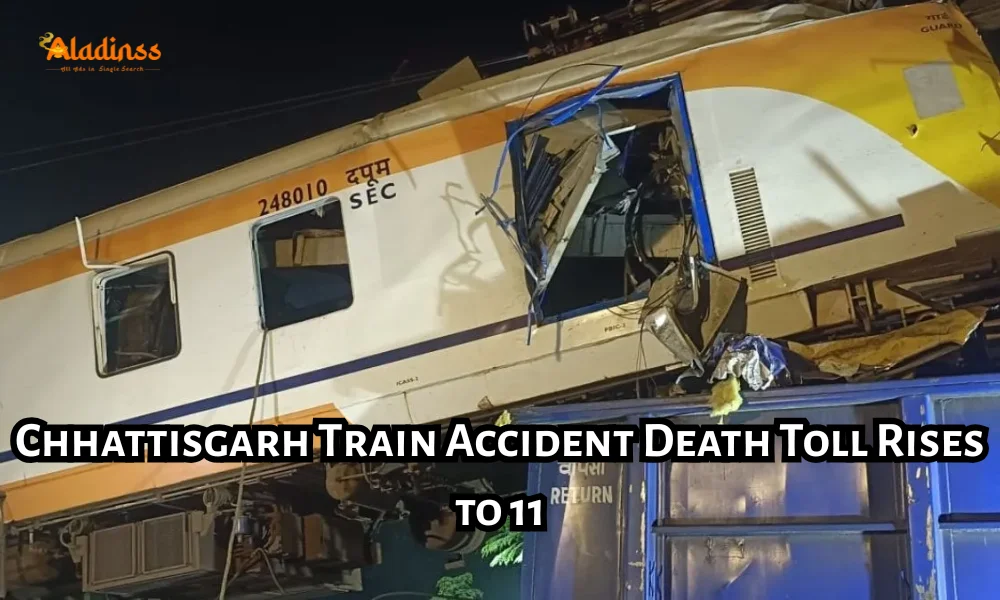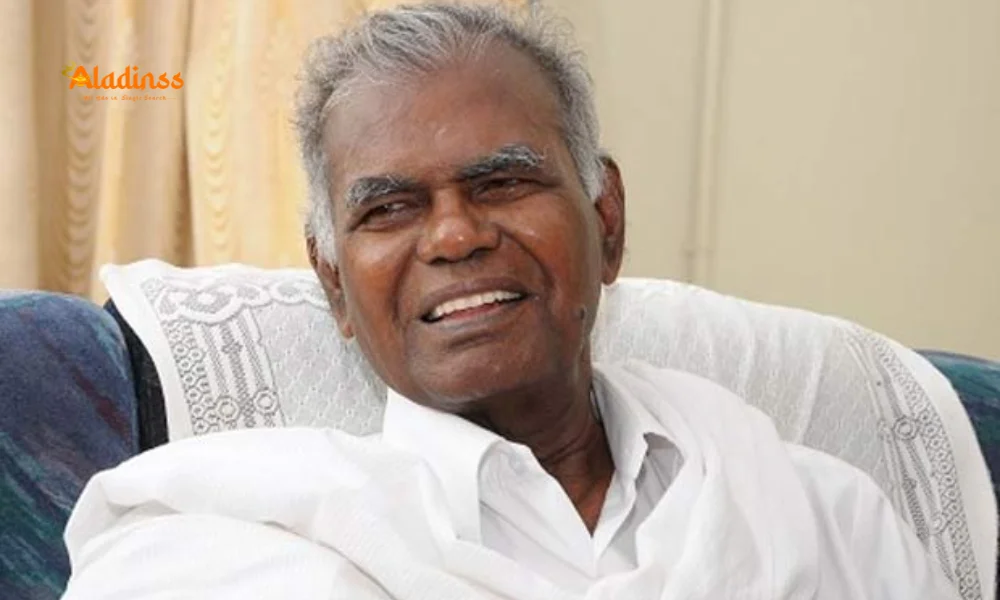Chhattisgarh Train Accident Death Toll Rises to 11

Bilaspur Train Collision: Death Toll Hits 11 Amid Signal Failure Probe

A devastating rail mishap near Bilaspur station in Chhattisgarh has claimed 11 lives, with officials confirming the grim update on November 5, 2025. The Bilaspur train accident unfolded when a passenger MEMU service from Gevra in Korba district slammed into a stationary goods train around 4 PM the previous day, sending shockwaves through the region. This tragic event highlights ongoing concerns over railway safety in India, as the collision's ferocity left one coach perched atop a cargo wagon, mangling structures and trapping passengers.
Rescue teams sprang into action swiftly, ferrying the injured to nearby medical facilities like Apollo Hospital and the Chhattisgarh Institute of Medical Sciences. Among the deceased is the train's loco pilot, Vidya Sagar, while his assistant, Rashmi Raj, battles severe injuries. The goods train's guard narrowly escaped with minor wounds after leaping from the brake van at the last second. As families mourn, the incident raises pressing questions about signal compliance and emergency protocols on busy routes.
Eyewitness accounts describe a scene of chaos, with the passenger train hurtling at 60-70 km/h despite a glaring red signal. Preliminary insights suggest human error played a role, but a thorough investigation awaits. This Chhattisgarh train accident not only disrupts local travel but also reignites national debates on fortifying rail infrastructure against such oversights.
Sequence of Events in the Bilaspur Train Collision
The MEMU passenger train, carrying daily commuters from Gevra's coal belt to Bilaspur, was navigating a routine route when disaster struck near Lalkhadan yard. Stationed for shunting, the goods train became an unwitting obstacle as the passenger service disregarded the stop signal. The rear-end impact was catastrophic, derailing coaches and crumpling the brake van into a twisted heap.
Railway crews, aided by local fire services, used gas cutters to extricate trapped individuals under floodlights that night. By dawn, the site was cleared enough to resume limited traffic, though full operations normalized only hours later. This swift response minimized further delays on the vital Howrah-Mumbai corridor, but the human cost remains stark.
- Time of Impact: Approximately 4 PM, November 4, 2025
- Train Details: MEMU 18262 from Gevra Road to Bilaspur Junction
- Collision Point: Near Bilaspur Outer Signal, Lalkhadan area
- Initial Response: Rail rescue teams on site within 15 minutes
Passengers recounted hearing a jolt before screams echoed through the cars. One survivor, a coal miner returning home, described the coach lifting off tracks like a "flying metal beast," underscoring the sheer velocity involved.
Casualties, Injuries, and Medical Response
The Bilaspur train accident has left a trail of sorrow, with 11 confirmed fatalities, including women and children among the victims. A heart-wrenching detail emerged of a one-and-a-half-year-old boy orphaned after losing both parents in the crash. Over 20 others sustained injuries ranging from fractures to lacerations, with four in critical condition as of Wednesday morning.
Medical teams at CIMS and Apollo provided round-the-clock care, deploying trauma specialists and blood banks. Rail authorities airlifted two severe cases to Raipur for advanced treatment. Psychological support units were also mobilized for grieving kin, recognizing the emotional scars beyond physical wounds.
Among rail staff, the loss of experienced loco pilot Vidya Sagar-a 25-year veteran-has hit colleagues hard. Assistant pilot Rashmi Raj, 32, underwent surgery for spinal injuries, while the goods train guard recovered from bruises at a local clinic.
Suspected Causes: Signal Breach and Human Factors
Early probes into the Chhattisgarh train accident point to the passenger train overshooting a red signal, a breach classified as "passing a danger signal." Traveling at high speed with the stationary goods train in clear view, the failure to engage emergency brakes remains a puzzle. Was it distraction, fatigue, or a momentary lapse? These questions dominate initial assessments.
No mechanical faults in signals or tracks have surfaced yet, per railway divisional manager statements. However, the yard's configuration-tight curves and multiple lines-may have compounded visibility issues during peak hours. Fatigue among crews, common on labor-intensive routes like Gevra-Bilaspur, is under scrutiny, though crew rest logs appear compliant.
Similar to past incidents, this could tie into broader systemic gaps, but officials caution against speculation until the Commissioner of Railway Safety (CRS) completes its inquiry, slated to begin November 6.
Compensation Packages and Government Aid
In a bid to support affected families, Indian Railways announced ex-gratia of Rs 10 lakh for each deceased's kin, Rs 5 lakh for those with grievous injuries, and Rs 1 lakh for minor ones. Chhattisgarh Chief Minister Vishnu Deo Sai added state aid of Rs 5 lakh per fatality and Rs 50,000 for the injured, vowing comprehensive rehabilitation.
Local administration set up helpdesks at Bilaspur station for claim processing, with counselors assisting paperwork. Prime Minister's relief fund may extend further, as seen in prior disasters. These measures, while financial lifelines, can't erase the void left by lost loved ones.
- Railways: Rs 10L (deceased), Rs 5L (grievous), Rs 1L (minor)
- State Govt: Rs 5L (deceased), Rs 50K (injured)
- Additional: Free medical, counseling, and travel reimbursements
Official Inquiry and Expected Outcomes
The CRS-led probe will dissect black box data, witness testimonies, and signal logs to pinpoint lapses. Expected to wrap in weeks, it could recommend enhanced training, AI-assisted braking, or yard redesigns. Past inquiries, like Balasore 2023, spurred Kavach system rollouts-anti-collision tech now piloted on 1,500 km, including Chhattisgarh segments.
Rail Minister's office has ordered a parallel internal review, focusing on crew protocols. Outcomes may influence the 2026 budget, allocating Rs 2.5 lakh crore for safety upgrades.
Broader Context: Railway Accidents in India 2025
This Bilaspur train accident occurs against a backdrop of progress in railway safety in India. FY 2024-25 saw collisions drop to 81 from 400 a decade ago, thanks to signaling overhauls and track renewals. Yet, 2023 NCRB data logs 24,678 incidents, mostly trespasser deaths (21,803), with collisions claiming 150 lives.
Chhattisgarh's coal-heavy lines, ferrying 100+ trains daily, face unique pressures from overloading and weather. Nationally, electrification reached 95%, reducing fire risks, but human elements persist in 40% of mishaps.
Comparative tragedies-like Odisha's 2023 triple collision (293 dead)-underscore urgency. Initiatives like 'Mission Raftaar' aim for 160 km/h speeds by 2030, but only with zero-tolerance safety nets.
Community Impact and Rail Network Disruptions
Bilaspur, a rail junction serving 50,000 daily, felt ripples: 20 trains diverted, stranding thousands. Coal miners from Korba, key passengers, faced delayed wages and family reunions. Local economy, tied to freight, halted briefly, costing lakhs in logistics.
Vigils lit up stations, with unions demanding accountability. Social media buzzed with condolences from leaders like Abhishek Banerjee, amplifying calls for justice.
Future Prevention: Lessons from the Bilaspur Tragedy
To avert repeats, experts advocate Kavach's full deployment by 2027, GPS tracking for pilots, and AI signal monitors. Training simulations could drill emergency responses, while crew welfare-mandatory rests-curbs errors.
- Tech Upgrades: Automatic Train Protection on high-risk routes
- Human Focus: Fatigue audits and mental health programs
- Infrastructure: Yard expansions in congestion-prone areas
- Public Awareness: Campaigns on track discipline
As probes unfold, the Bilaspur train accident serves as a somber catalyst for reform, ensuring rails-India's lifeline-carry hope, not heartbreak.
Comment / Reply From
No comments yet. Be the first to comment!











